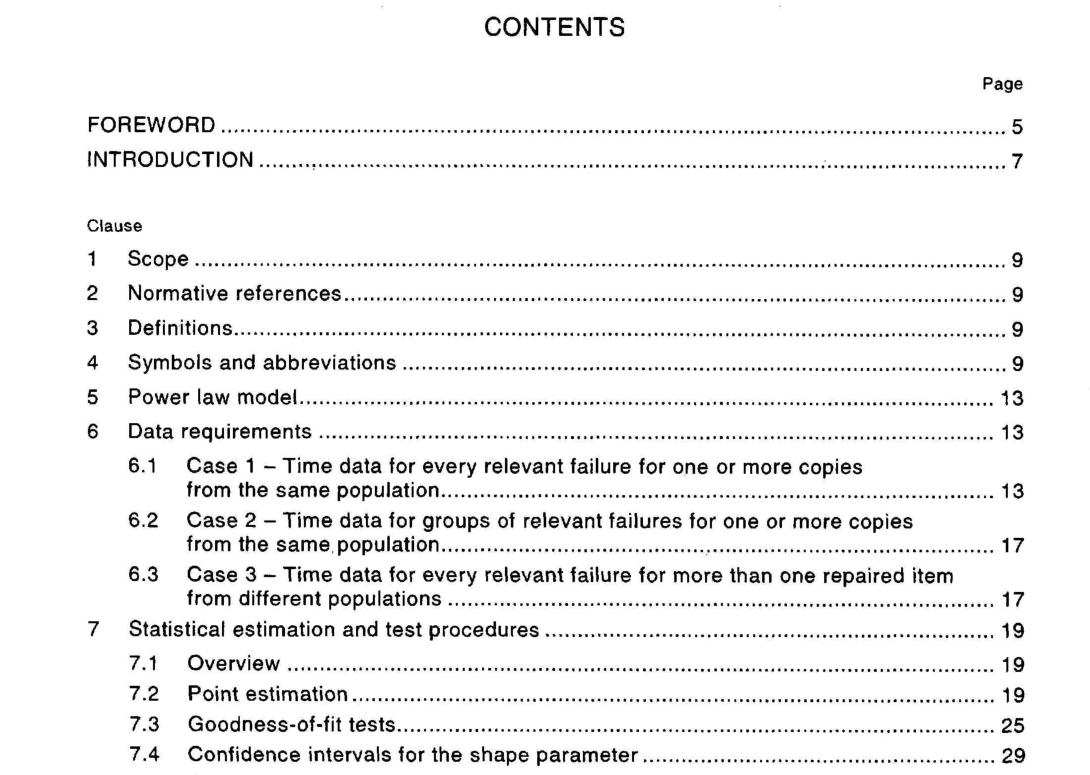IEC 61710 pdf download

IEC 61710 pdf download.Power law model – Goodness-of-fit tests and estimation methods
1 Scope
This International Standard specifies procedures to estimate the parameters of the power law model, to provide confidence intervals for the failure intensity, to provide prediction intervals for the times to future failures, and to test the goodness-of-fit of the power law model to data from repaired items.
2 Normative references
The following normative documents contain provisions which, through reference in this text, constitute provisions of this International Standard. For dated references, subsequent amendments to, or revisions of, any of these publications do not apply. However, parties to agreements based on this International Standard are encouraged to investigate the possibility of applying the most recent editions of the normative documents indicated below. For undated references, the latest edition of the normative document referred to applies. Members of IEC and ISO maintain registers of currently valid International Standards. IEC 60050(191):1990, , International Electrotechnical Vocabulary (IEV) 一Chapter 191: Dependability and quality of service
7 Statistical estimation and test procedures
7.1 Overview In case 1一time data for every relevant failure – the formulae given for failure terminated data assume one repaired item, that is k=1. All output results correspond to that item. The formulae given for time terminated data assume k copies of the item observed for the same length of time. If there is only one repaired item then k=1. The point estimation procedures for all the aforementioned cases are given in 7.2.1. The appropriate procedures for the case when all copies are observed for different lengths of time are given in 7.2.2. Procedures for the case of time data for groups of relevant failures are given in 7.2.3. An appropriate goodness-of-fit test, as described in 7.3 shall be performed after the parameter estimation procedures of 7.2. Note that these tests, and the procedures given in 7.4 to 7.7 for constructing interval estimates and carrying out statistical tests, distinguish only between the cases of time data for every relevant failure (i.e. all instances of case 1 data 一 1a), 1b) and 1c)) and time data for groups of relevant failures (i.e. case 2). . NOTE The inference procedures that follow provide approximate estimates in some circumstances and so caution is required if they are to be applied to very small samples of data. NOTE The Chi-square test is a large-sample test and so will need large data sets to detect deviations from the power law model that are practically important. 7.3.2.2 Graphical procedure When the data set consists of known time intervals, each containing a known number of failures,the graphical procedure described below may be used to obtain additional information about the correspondence between the model and the data. This involves plotting the expected number of failures against those observed at each endpoint. Further details of the approach are given in annex A.
The following numerical examples show the use of the procedures discussed in clause 7. Example 1 considers time data for every relevant failure for a single item when observation is failure terminated. Example 2 considers time data for every relevant failure for multiple copies of the same item when observation is time terminated. Example 3 considers time data for every relevant failure of two items from different populations. Example 4 considers groups of relevant failures for a single item. All examples ilustrate the use of appropriate estimation methods. Goodness-of-fit tests are applied when appropriate. These examples may be used to validate computer programs designed to implement the methods given in clause 7. Note that all the calculations in the examples were carried out using a spreadsheet software package. Although the final figures are presented to two or three decimal places, the intermediate calculations were carried out in double precision. |f intermediate calculations are computed with less precision, then the final figures might differ slightly from those presented due to rounding errors.









